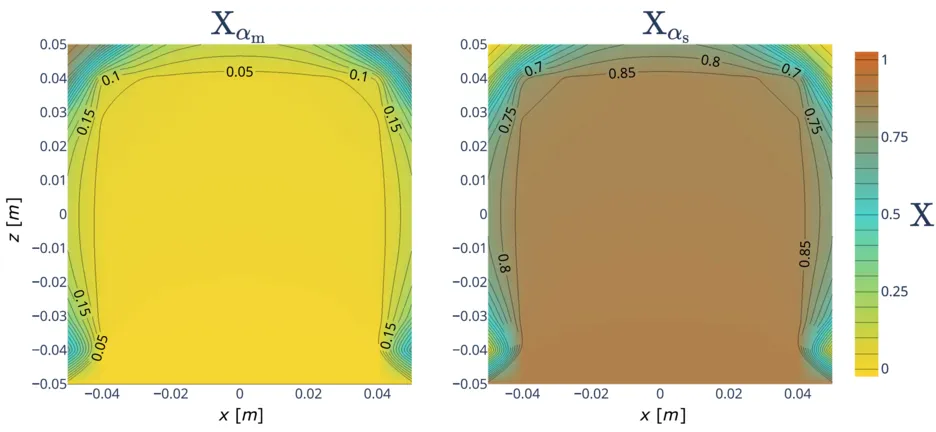Microstructure Modeling in Metal Additive Manufacturing
The elasto-plastic material behavior, material strength and failure modes of metals fabricated by additive manufacturing technologies are significantly determined by the underlying process-specific microstructure evolution. In our recent work Nitzler et al. 2021a novel physics-based and data-supported phenomenological microstructure model for Ti-6Al-4V is proposed that is suitable for the part-scale simulation of laser powder bed fusion processes. The model predicts spatially homogenized phase fractions of the most relevant microstructural species, namely the stable β-phase, the stable αs-phase as well as the metastable Martensite αm-phase, in a physically consistent manner. In particular, the modeled microstructure evolution, in form of diffusion-based and non-diffusional transformations, is a pure consequence of energy and mobility competitions among the different species, without the need for heuristic transformation criteria as often applied in existing models. The mathematically consistent formulation of the evolution equations in rate form renders the model suitable for the practically relevant scenario of temperature- or time-dependent diffusion coefficients, arbitrary temperature profiles, and multiple coexisting phases. Due to its physically motivated foundation, the proposed model requires only a minimal number of free parameters, which are determined in an inverse identification process considering a broad experimental data basis in form of time-temperature transformation (TTT) diagrams. The predictive ability of the model has been demonstrated by means of continuous cooling transformation (CCT) diagrams, showing that experimentally observed characteristics such as critical cooling rates emerge naturally from the proposed microstructure model, instead of being enforced as heuristic transformation criteria. Exemplarily, the proposed model has also been exploited to predict the microstructure evolution for realistic selective laser melting applications and for the simulation of cooling/quenching processes, considering parts of pratically relevant size.
Publications
Please find publications on this topic here.

